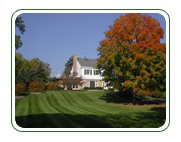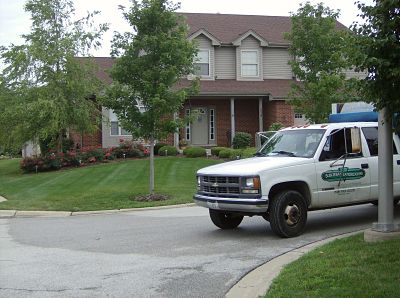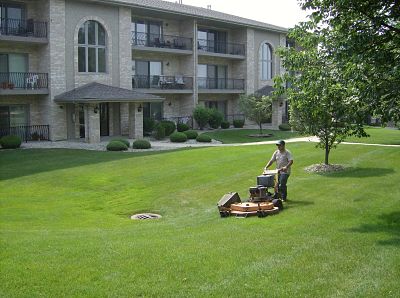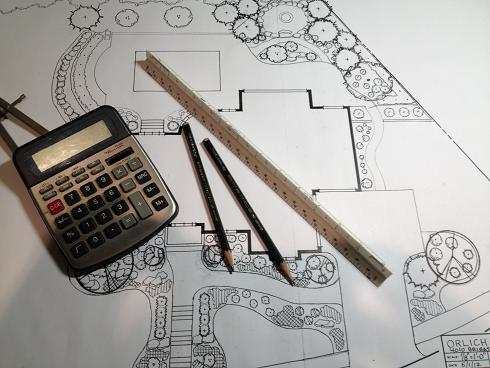
Uncategorised
![]()

Serving the Chicago suburbs and Northwest Indiana since 1984, Suburban Landscaping has been a leader in landscape design, installation, and maintenance. With creative designs, quality work, and outstanding service, we have grown into one of the most recognized and respected companies in our industry.
From our full-time office staff to our experienced, seasoned crews, everyone at Suburban Landscaping is dedicated to our customers’ satisfaction by providing the highest level of craftsmanship and professionalism. Our entire results-driven staff has been trained to provide you with the service you expect and the quality you deserve.
One of our most often praised specialties is property maintenance. Whether it’s a private residence, municipality, commercial complex,, or a multi-family association, we provide you with a level of quality and service our clients have come to depend on year after year. Our time-tested system of maintaining properties just like yours guarantees you the highest quality and the best value in the area. Let our trained staff assist you in obtaining the best landscape possible for your property.
Being a full service landscape company, we also specialize in creating sensational landscapes and outdoor living spaces. Our experienced landscape design team has the reputation for unique designs and the creativity to enhance your property’s aesthetic beauty and value. Whether your tastes are simple or extravagant, or anywhere in between, our landscape designers can create a custom landscape plan to fit your needs and budget. Let Suburban Landscaping help you realize the landscape of your dreams and surround you with a carefree landscape to enjoy at your leisure.
Feel free to explore our website and learn more about our landscape designs, maintenance services or the many different ways we can improve your outdoor living with customized landscaping options. Or discover the endless possibilities we can offer in spacious brick patios, outdoor kitchens, relaxing ponds, or the ever popular fire pit for a chilly evening.
From our President to our newest intern, everyone at Suburban Landscaping takes pride in what we do and welcomes the opportunity to be of service. All estimates are free, and all of our work is guaranteed in writing. Timely, well managed, and professional is our calling card, and impeccable results is our thank you card.
Slit-Seeding
What Is Slit-Seeding?
When re-seeding your lawn becomes necessary to thicken or enhance your turf, one of the easiest and best ways is to add seed to your lawn using a slit seeder. A slit seeder is a machine that vertically cuts, or slits, the ground and implants seeds into the groves allowing the seeds to rest in nutrient rich soil below the thatch layer. It’s that direct contact with the nutrient rich soil that gives slit-seeding the high seed germination rate and makes it a better option than broadcast over-seeding.
How Do I Know If I Need Slit-Seeding?
An estimator from Suburban Landscaping can assess your lawn and determine if an over-seeding using a slit seeder is needed. Typically if more than 50% of your lawn is infested with grassy weeds, then an application of a non-selective herbicide may be necessary. Eliminating the weeds will reduce the competition and allow the newly implanted seeds more space and nutrients to thrive in. The experts at Suburban Landscaping will also select the right blend of seeds for your soil to create a lush turf that you can enjoy.
Some lawns may not be candidates for slit-seeding. For example, a lawn with too much thatch would not be a recommended lawn for slit-seeding until the thatch issue has been resolved (multiple aerations or a de-thatching).
How Long Does It Take?
The process of slit-seeding a lawn is not a long or complicated process, the machine handles most of the work. Most residential lawns and small commercial properties can be slit-seeded in less than a day.
The seed itself will take 5-14 days to start growing, depending on the type of seed. Most lawns in the Midwest are primarily Kentucky Bluegrass, which takes about 20 days to germinate and start growing.
What Do I Have To Do After My Lawn Is Slit-Seeded?
You will need to water the lawn every day for the first 30 days to keep the seed moist and allow for proper germination. A lack of water will quickly reduce the seeds germination rate and therefore the effectiveness of the slit-seeding.
You also will continue to mow your lawn as you, or your landscape company, usually does. The mowers will not “pick up” or “vacuum up” the seed, it is perfectly acceptable to mow over the seeded lawn.
What Does Slit Seeding Cost?
Pricing for slit seeding is calculated based on the square-footage of the area you want to seed and the type of seed selected. For most residential lawns the costs starts around $400 and goes up from there. Slit seeding is by far the least expensive way to revive or renew your existing lawn.
Please call our office to schedule an estimate, or request a quote online.
Gypsum Lawn Application
What is Gypsum?
Gypsum (Calcium Sulfate or CaSO4) is a relatively soft mineral naturally created as a byproduct of sulfide oxidation. Gypsum is found naturally in a crystal form in several states in the United States including Indiana, Iowa, and California.
One of the very first known uses for Gypsum in the United Stated was by Benjamin Franklin, who used Gypsum to make plaster for the walls of his home. Gypsum is also the main ingredient in chalkboard chalk, as well as drywall that is in most modern homes. Gypsum is also used in the making of glass, Portland cement, Plaster of Paris, and as an additive to medicines.
How Does Gypsum Help My Lawn?
Gypsum is a recommended application to resolve some soil issues in you lawn. Gypsum has been used in certain applications to reduce soil compaction, improve soil structure, increase air movement, and prevent reduce water run-off by preventing soil crusting.
Gypsum also has the ability to dislodge sodium (salt) in the soil. This ability of Gypsum may be the most useful of all because of the damaging effects salt has on lawns and plant materials in the landscape.
That being said, there are respected professionals that argue about Gypsums ability to reduce lawn compaction in the primarily clay soils of the urban Midwest. There is also a concern about using Gypsum that contains dolomite, which can raise the Ph of soil.
What Can Gypsum Do For Salt Burn On My Lawn?
In the winter when rock salt is applied to asphalt it inevitably gets into the lawn, whether it is spread by a salt truck or if it is piled on the lawn by a snowplow. Although the rock salt is essential to winter safety, salt is very damaging on lawns and plants.
When excessive rock salt (sodium) used on streets and driveways gets into the lawn, the salt damages the soil structure by displacing other key elements needed by the lawn. The use of Gypsum dislodges the salt and allows it to leach away into the sub-soils below the roots of the lawn, rendering it harmless to the lawn. Heavy watering is required in these areas to aid in the leaching process.
For the technically minded, here is some more information. Salt in the soil will prevent water absorption and block water from being absorbed by the roots of the lawn. Salt also raises the Ph of the effected soil, potentially retarding the growth of the lawn even more. When salt breaks down in the soil, salt releases chloride, which gathers in the blades of the lawn. In sufficient quantities, the chloride can discolor the blades and even cause the blade to die. If the section of lawn doesn’t perish, the weakened lawn is more susceptible to disease and competition from weeds.
Gypsum And Aeration: The Best Combination
Gypsum works best when it is in direct contact with soil, such as before you seed/sod or when you rototill your garden. For established lawns, the best results are found when Gypsum is applied after a lawn aeration. The aerator removes small plugs of soil from your lawn, creating holes about the size of your small finger. If the Gypsum is applied directly after the aeration it enters those holes and has direct contact with the soil in those holes. Applying Gypsum as a surface application is less effective than direct contact, such as after aeration.
Do I need A Soil Test Before Applying Gypsum?
Soil tests are tests we perform to check the levels of certain minerals in the soil. Soil tests also tell us the Ph of the soil, indicating whether it is alkaline, acidic or Ph neutral. Soil tests are always a good idea because other than a soil test there is no scientific way to determine the Ph or mineral content of your soil. Seasoned professional and horticulturalists can see some deficiencies in your lawn by the color, but without a soil test there is no accurate way to know the remedy. Gypsum is needed in your lawn when your lawn is low in calcium and high in magnesium, something only a soil test can tell.
If you are interested in a Gypsum application for rock salt damage on your lawn, then there is no need for a soil test. However, if you are interested in a gypsum application for lawn problems such as compaction or drainage, then yes, a soil test would be essential.
Gypsum For Salt Plant Damage
For the same reasons stated above, salt will also damage the plants in your landscape. Although not as common as salt in your lawn, rock salt ending up in your planting beds will still change the Ph of the bed soils and block the landscape plants from absorbing water. When this happens, evergreens with start to wilt, discolor, and die off. Deciduous plants will show visible signs as well, usually looking like burnt leaves. Using Gypsum around the base of your landscape plants is also a valuable ability of Gypsum.
Is Gypsum Safe?
Yes Gypsum is safe. Pure Gypsum is a natural mineral that does not affect the Ph of the soil nor does it add or detract from the existing minerals already found in your soil. Gypsum has no plant nutrients, such as nitrogen, so there is no chance of plant damage when using it. Gypsum is also safe for pets and workers can handle the product without gloves or masks.
How Much Does A Gypsum Application Cost?
Depending upon the reason for an application, the quantity of Gypsum can vary significantly. The amounts of Gypsum for lawn applications can range from 20 – 50 pounds per 1000 square feet, therefore changing the material cost significantly.
If a lawn application is needed, the minimum application cost is $90. However, if the application is selective, such as for rock salt damage, then the costs can vary.
Recapping the Benefits of Gypsum
- Dislodges Sodium (salt) from the soil
- A faster way to add calcium to a lawn without changing the Ph
- Reverses aluminum toxicity in soil
- Increase water filtration is saline soils
- Treating dog urine damage in lawns
- Aids in water percolation
- Helps in soil aeration




